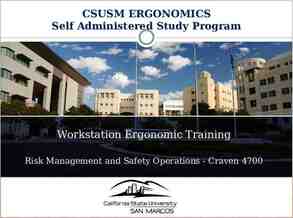Pre-breeding in annual legumes MLA project B.PBE.0037 Phil
9 Slides2.91 MB
Pre-breeding in annual legumes MLA project B.PBE.0037 Phil Nichols Department of Agriculture and Food Western Australia
The project team
What we did Developed new tools & technologies to increase rate of genetic gain in annual legume breeding To reduce cultivar development time To determine genetic diversity for important traits Is their sufficient variation for plant breeding? Can we identify the genes involved? To develop molecular markers for important traits For more efficient breeding and selection Species Determined at an industry workshop in 2013 A high emphasis on subterranean clover Utilised the ‘core collection’ of 97 highly diverse lines and 28 cultivars Some work on annual medics and other legumes Outputs and beneficiaries Genetic information and molecular markers for public and private breeding programs – immediate users Graziers will benefit from more productive and persistent cultivars with genes for new traits
Developed a sub clover genomic platform Published the sub clover genome sequence cv. Daliak is the reference genome Allows identification of the genetic basis of agronomically important traits in sub clover Characterised 125 core collection lines and cultivars at the DNA level Developed high density SNP maps Can now associate genetic differences for traits with differences in DNA markers Comparison of DNA sequences to the reference genome Outcome will be DNA markers for traits of interest Enables simultaneous genomic selection for many genes Especially important for traits difficult to measure Can also relate trait and DNA information to site collection data Understanding of traits and genes important for adaptation to different environments Key message: This technology allows more efficient and precise selection of sub clovers containing genes for new traits - leading to more productive and persistent sub clovers
Phenotyped sub clover core collection & cvs Seedling growth traits
Annual medics and other legumes Adapted a boron tolerance molecular marker in barrel medic for use in burr & stand medics This will lead to more efficient breeding of annual medics for B tolerance Diversity found for seedling growth, independent Boron susceptibility of seed size, in barrel and strand medics Diversity found for seedling resistance to RLEM among 156 annual medics in 14 species Key message: New genes and new traits have been found that can be exploited for breeding more productive and persistent medics Hardseededness and timing of seed softening in 38 annual legumes are being examined in Perth, Adelaide and Canberra This will provide a better understanding of diversity within species and the effects of environment on hard seed traits
Increased generation turnover rates Developed a rapid generation protocol for sub clover Grow 3-5 generations per year (1 per year currently) Reduce time to flower - vernalise and subject to 18 hours photoperiod Harvest immature burrs from first flowers and culture embryos on agar Transplant to pots and repeat Extended protocol to annual medics and serradellas Key message: Improved cultivars can reach the paddock at least 3 years sooner
Unanswered questions
Profit chart (for 2025 ) New annual legumes bred with new tools and technologies: 10% more total dm x 50 mill ha x 10% adoption 5 mill ha 20% more autumn-winter kg/ha dm/year 10% more total kg/ha dm/year New annual legumes bred with new tools and technologies: 10% less P use x 50 mill ha x 10% adoption 5 mill ha 10% lower P costs/year New annual legumes bred with new tools and technologies: 10% less methane emission x 50 mill ha x 10% adoption 5 mill ha 10% less methane emission/year 15/ha liveweight gain/year Additional 75 mill on-farm value by 2025














